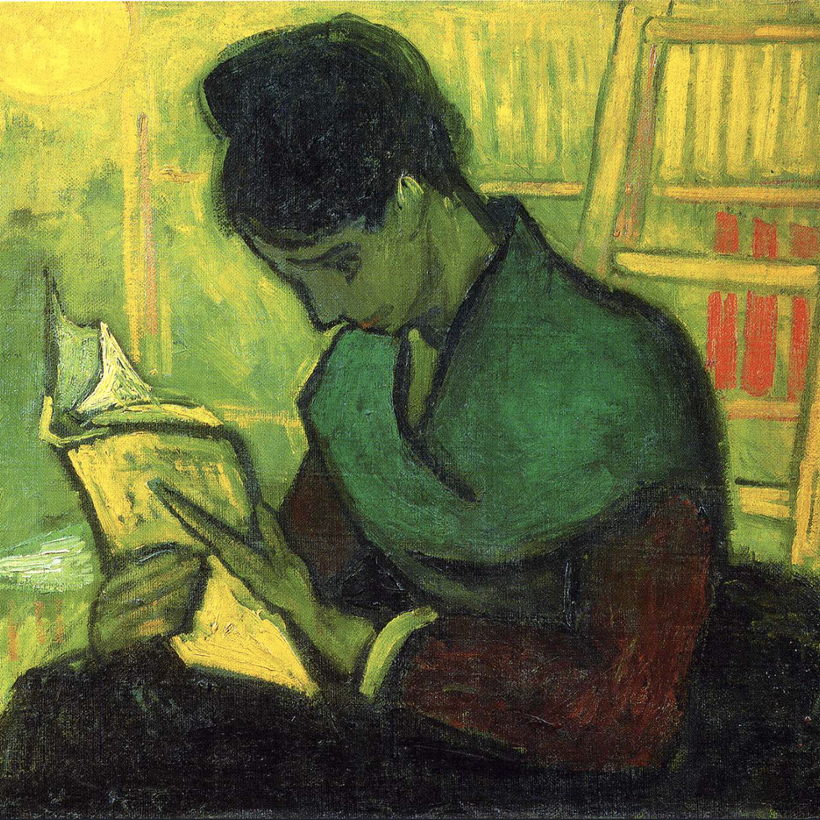The story of Vincent van Gogh’s three younger sisters is not one of undiscovered genius, the way Virginia Woolf imagined Shakespeare’s sister, thwarted and silenced by the constraints of gender, in A Room of One’s Own. Anna, Lies, and Willemien van Gogh are quite ordinary, but that is not to say uninteresting. Paying attention to ordinary lives can do vital work in redressing the imbalances of history.
Yet because Van Gogh himself remains so extraordinary, so unbalancing, it is almost impossible to get free of him, a vortex tugging all the light in the starry sky toward himself. Just last month, a single small painting of a street corner in Montmartre fetched more than $15 million at auction at Sotheby’s in Paris. Explicitly or not, all Van Gogh biographies, even this one, are pulled back to the same endless question, of how this outwardly ordinary Dutch minister’s son created his revelatory body of work.
The eldest of six living children of Dorus and Anna van Gogh, Vincent was born in 1853, a year to the day after the couple’s first son, also named Vincent, was stillborn. Next came Anna, then Theo, who became an art dealer and his brother’s champion throughout his life. Two more sisters followed—Elisabeth (Lies) and Willemien (Wil)—and finally, after a gap of five years, another boy, Cornelis (Cor). Fourteen years younger than Vincent, he struck out the furthest, for South Africa, and died during the Boer War.
Paying attention to ordinary lives can do vital work in redressing the imbalances of history.
The Van Goghs moved several times when the children were young, within the Netherlands’ rural, heavily Catholic North Brabant region. As Protestants, they were in a minority, though a powerful one, and this sense of cultural dislocation seems to have intensified the closeness within the family.
The siblings teased and worried about each other in their long, lively letters. Writing to Theo from London about Vincent’s increasingly erratic behavior, Anna vividly described his tendency to judge people prematurely, and if they didn’t live up to his expectations, to “[throw] them away like a bouquet of wilted flowers.”
Yet these flashes are rare. Much of the sisters’ correspondence does not survive, and biographical scrupulousness prevents The Van Gogh Sisters author Willem-Jan Verlinden from speculating on the sisters’ feelings without documentary evidence. Such restraint makes it difficult to enter into their emotional lives, and renders dramatic events rather flat.
The siblings teased and worried about each other in their long, lively letters.
This is particularly apparent when the story is a scandal. In 1880, when she was 21, Lies van Gogh took a job as a companion to an older, chronically ill woman. Six years later, she was pregnant by her employer’s husband. She traveled to England to give birth, but made it only as far as northern France. The baby, Hubertine, was placed in the care of a local woman, and after a little over a month, Lies returned to her employer. Three years later, the woman died, and at the end of 1891—not long after the deaths of both Vincent and Theo—Lies finally married her lover. They had four more children together, but Hubertine was not acknowledged by her parents until the other children were adults.
Little sister Wil was the only daughter who did not marry. Verlinden presents her brief connection with the Dutch suffrage and labor movements, in the early 1890s, as evidence of a commitment to social change, perhaps an activist career derailed by psychological demons. Nearly a decade younger than Vincent, Wil entered an asylum at the age of 40, where she lived until her death, in 1941, the last surviving Van Gogh sibling.
Lies never achieved the literary fame she dreamed of as a young woman, but she did publish several collections of poetry and a book about Vincent that caused a serious rift with her sister-in-law, Johanna van Gogh-Bonger. As Vincent’s posthumous fame grew, the drawings and paintings he had given as gifts to his sisters became a means of financial support—and, inevitably, a source of wrangling over ownership and legacy. The sisters’ last years were absorbed in grandchildren, real estate, and feuds.
Verlinden tells us there is no explicit discussion of women’s rights anywhere in the Van Gogh sisters’ surviving correspondence. Even without this discussion, however, there is scope to interpret the evidence more freely. One of the major sources for the biography is a family history written by a maiden aunt: the kind of traditionally feminine writing, private and unheralded, that deserves to be seen as meaningful historical work. In its creation and survival, such a document betrays a belief, unshakable even if unspoken, in the importance of ordinary women’s lives.
Joanna Scutts is the author of The Extra Woman: How Marjorie Hillis Led a Generation of Women to Live Alone and Like It


